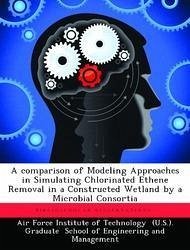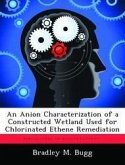The purpose of this study is to compare different approaches to modeling the reductive dechlorination of chlorinated ethenes in the anaerobic region of an upward flow constructed wetland by microbial consortia. A controlled simulation experiment that compares three different approaches to modeling the degradation of chlorinated ethenes in wetland environments is conducted and investigates how each of the modeling approaches affect simulation results. Concepts like microbial growth in the form of a biofilm and spatially varying contaminant concentrations bring the validity of the CSTR assumption into question. These concepts are incorporated into the different modeling approaches to evaluate the CSTR assumption. Model simulations show that spatially varying contaminant concentrations have a significant affect on contaminant effluent concentrations. Additionally, the significance of the incorporation of a biofilm concept depends on the time characteristics of both diffusive mass transport and reaction kinetics.








